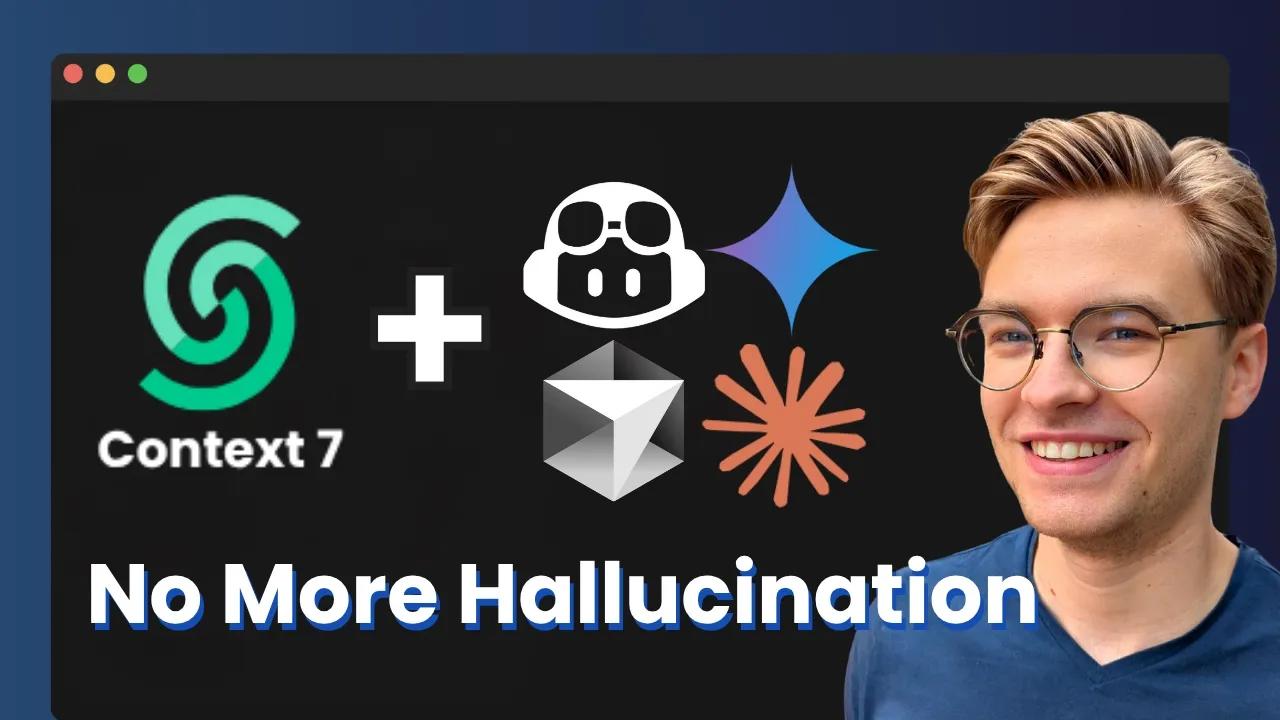Why AI Coding Tools Use Outdated Information
There’s a huge problem in AI coding right now that most engineers don’t even realize exists. Your AI coding assistant—whether it’s Copilot, Claude, or any other tool—is fundamentally stuck in the past. This isn’t a minor inconvenience; it’s a barrier that can derail innovation and lead you down paths that simply don’t work anymore.
The Training Data Time Bomb
Every AI model has a knowledge cutoff date. Everything it knows about frameworks, libraries, and best practices comes from data available up to that point. Meanwhile, the software world keeps moving forward at breakneck speed. New versions release every few weeks, specifications change, functions get deprecated, and entirely new patterns emerge.
This creates a dangerous situation. Your AI assistant confidently suggests approaches that were valid six months ago but are now outdated. It tries to call functions that no longer exist or uses parameters that have completely changed. Worse, it doesn’t know it’s wrong—it hallucinates based on patterns from its training data, creating convincing but incorrect solutions.
The Accelerating Gap
The knowledge gap problem is getting worse, not better. Technology evolution is accelerating, particularly in AI-related fields. Consider frameworks like Model Context Protocol (MCP), which releases significant updates every couple of weeks. These aren’t minor tweaks—they’re substantial changes to specifications and implementations.
By the time an AI model is trained, tested, and deployed, the technologies it learned about have already evolved. The gap between what the AI knows and current reality grows wider with each passing day. This isn’t a temporary problem that will be solved with the next model update—it’s a fundamental challenge of AI-assisted development.
Innovation Barriers
This knowledge gap creates invisible barriers to innovation. When you’re trying to build with cutting-edge technologies, your AI assistant becomes more hindrance than help. It steers you toward outdated patterns, suggests deprecated approaches, and lacks awareness of new capabilities that could transform your solution.
Engineers working on the bleeding edge find themselves fighting against their tools rather than being empowered by them. The AI’s outdated knowledge becomes a weight that drags down innovation, forcing developers to second-guess every suggestion and verify every approach against current documentation.
The Documentation Dilemma
The traditional solution—manually checking documentation—doesn’t scale. Modern development involves dozens of dependencies, each with their own documentation, update cycles, and breaking changes. Manually copying and pasting documentation into prompts is time-consuming and error-prone. More critically, you often don’t know which documentation you need until you’re deep into implementation.
This creates a catch-22: you need current information to build effectively, but getting that information interrupts your flow and slows development. The very tools meant to accelerate development end up creating new bottlenecks.
Strategic Implications
The knowledge gap has profound implications for how we approach AI-assisted development. It means that blindly trusting AI suggestions is not just inefficient—it’s dangerous. It means that the value of AI tools varies dramatically based on how current the technology you’re using is. Working with established, stable technologies? AI assistance is invaluable. Building with cutting-edge frameworks? AI might actively mislead you.
This reality reshapes how we should think about AI tools. They’re not universal accelerators—they’re contextual assistants whose value depends heavily on the currency of their knowledge. Understanding this limitation is crucial for using them effectively.
For engineers looking to master these tools despite their limitations, my comprehensive AI coding assistants guide for engineers provides strategies for working effectively with AI while recognizing knowledge gaps.
The Human Advantage
Ironically, the knowledge gap makes human expertise more valuable, not less. Experienced engineers who stay current with evolving technologies become essential guides for AI tools. They can recognize when the AI is suggesting outdated approaches, correct its course, and bridge the gap between historical training data and current reality.
This dynamic creates a new role for engineers: not just builders, but navigators who guide AI tools through the evolving landscape of modern development. The ability to recognize and compensate for AI knowledge gaps becomes a critical skill.
This shift towards practical AI implementation skills is why my practical AI implementation roadmap focuses on real-world competencies rather than theoretical knowledge.
Building Bridges
The solution isn’t to abandon AI tools—it’s to build bridges across the knowledge gap. This means developing strategies to keep AI assistants current with evolving technologies. It means creating workflows that combine AI capabilities with real-time information access. Most importantly, it means recognizing the gap exists and accounting for it in how we work.
Forward-thinking engineers are already developing approaches to address this challenge. They’re finding ways to augment AI tools with current documentation, creating systems that combine the pattern recognition capabilities of AI with up-to-date technical specifications. This hybrid approach points toward a future where AI tools remain valuable even as technology accelerates.
To understand how successful engineers navigate these challenges in practice, explore my guide on AI pair programming for engineers, which covers real-world workflows for collaborating with AI despite knowledge limitations.
To see a practical demonstration of bridging this knowledge gap using real-time documentation integration, watch the full video tutorial on YouTube. I show exactly how to keep AI coding tools current with rapidly evolving frameworks, ensuring you can innovate without being held back by outdated training data. Ready to become an AI-native engineer who navigates these challenges effectively? Join the AI Engineering community where we share strategies for working with AI tools in the real world of rapid technological change.

